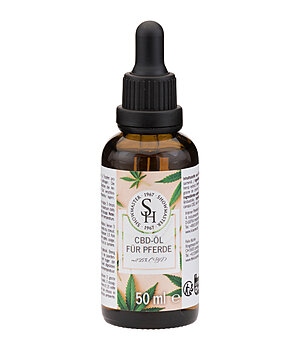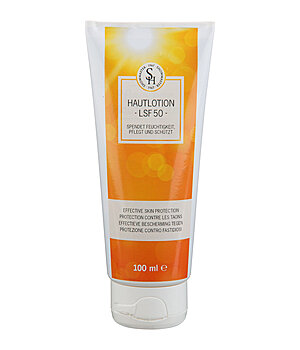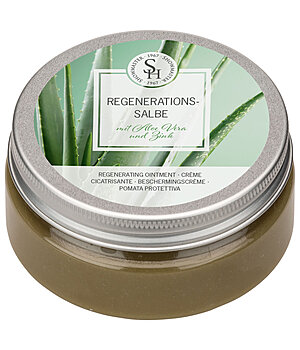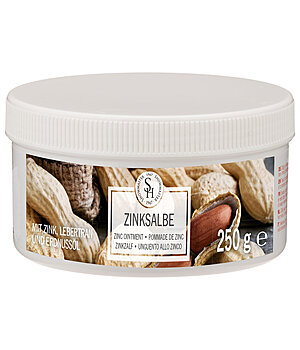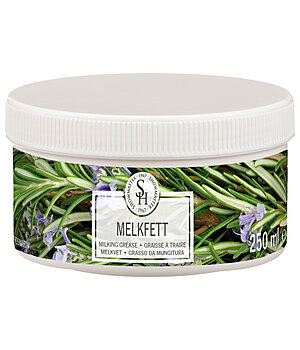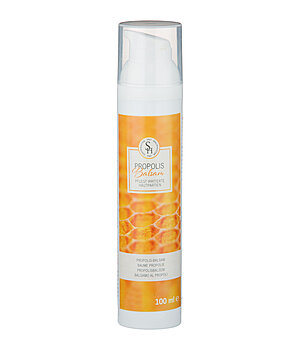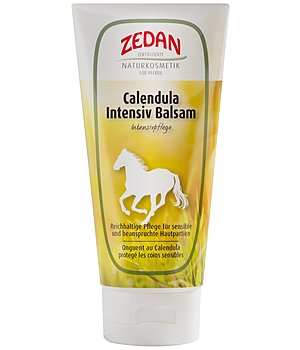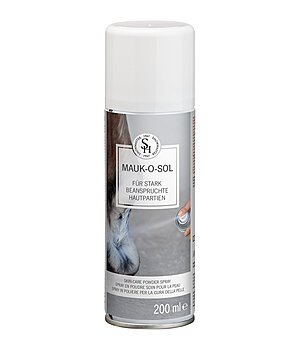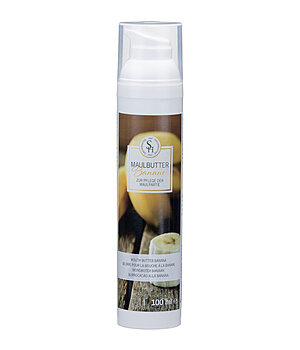Skin care of the horse
Did you know that the skin of a horse can be up to 10 square metres in size? As with us humans, the skin is by far the largest organ of the horse. The skin intercepts the stimuli of the external environment, protects the body from harmful substances and can equally excrete these again from the inside. In addition, it is probably the most important sensory organ that all living creatures have. In our guide, you will find comprehensive information about the structure and functions of the skin. We also show you what you should pay attention to when caring for the skin.

The horse’s skin – the largest organ and its function
In order to assess the general health of a horse, the first glance of specialists such as veterinarians or horse breeders often falls on the coat and hooves. The condition of the skin and its appendages such as hair and hooves can be an indicator of organic diseases. Dull coat, scaly skin or pustules should therefore always be perceived as a warning signal and clarified by a veterinarian.
The functions of the skin are diverse:
- It protects against environmental influences (weather, dirt, viruses, bacteria, etc.).
- It acts as a filter for harmful substances on both sides and does not allow them to penetrate the body from the outside, but excretes harmful substances from the body again via the sweat glands.
- It helps to regulate body temperature
- To a small extent, it also provides the body with oxygen.
- It is responsible for the production of hair, coat and hooves.
- With its extensive network of nerve tracts, it is responsible for the horse’s sensory perceptions.
This makes it all the more important to care for the horse’s skin regularly and to protect it from harmful stimuli. Tips on skin care routines and how to recognise common skin diseases are explained in our guide.
Skin care basics for horses – what is the care routine?
Skin care for horses should basically be done passively. While humans like to apply lotion after showering to moisturise the skin, preventive care is usually not necessary for horses. On the one hand, the skin is optimally protected by the dense coat of the horse, on the other hand, the skin has a protective acid layer, which is formed by the horn cells as well as the sebaceous and sweat glands. This slightly greasy protective layer prevents the skin from drying out and also reliably wards off bacteria, viruses, fungi and parasites. And even situations that don’t look like skin care to us humans are an important part of maintaining the function of the skin and coat, such as rubbing, rolling or even the mutual nibbling of horses in a community. Rolling, for example, applies an additional „protective layer“ of mud and dust that protects the horse from insect bites in summer.

What can be considered in the daily care of the horse?

- As far as possible, do not use grooming sprays (e.g. coat shine sprays), as these unbalance the natural pH value of the skin in the long run and destroy the protective acid layer in the long run. For horses that are not sensitive, there is of course no reason why they should not be used on special occasions such as a competition.
- Daily coat and mane care with the help of brushes is usually sufficient. Use the time when brushing to examine the skin for injuries, dandruff, redness or pustules. This way, diseases can be detected quickly and treated effectively.
- To promote blood circulation to the skin, you can incorporate elements of horse massage into your daily grooming routine. The easiest way to do this is with a massage brush.
- As a general rule, don’t brush too much, but don’t brush too little either. Excessive brushing of the coat can destroy the natural greasy film on the skin, as can washing the horse too often. On the other hand, if the horse is not thoroughly groomed before riding, especially in the saddle area, this can lead to pressure and chafing.
- Every horse should have its own grooming kit and riding accessories. Especially in the case of bacterial or parasitic skin diseases, transmission can occur very quickly via shared equipment.
- Choose grooming and skin care products according to your horse’s skin type. As with us humans, there are also horses that tend to have dry or oily skin or are extremely sensitive to fragrances, dyes and preservatives.
- Let the horse be a horse: as we have already experienced, horses are also capable of skin care themselves. This includes, for example, rolling in mud or on sandy ground. Especially in summer, this layer of dirt on the paddock offers ideal protection against insect bites. Before riding, however, the horse should be thoroughly cleaned to avoid pressure and chafing marks.

Skin problems in horses – how does it happen and what can be done?
First and foremost, it is important to recognise the symptoms of a skin disease in the horse at an early stage and to define the problems in order to initiate appropriate treatment. Therefore, during the daily grooming routine, one should check the skin for injuries, flakes, chafing, pustules, etc.

The causes of skin problems in horses are varied:
- Infections by pathogens (bacteria, viruses, fungi)
- Parasite infestation (lice, mites, hair lice)
- Nutrient deficiency due to inadequate feeding
- Housing conditions (damp floors, heated stables, inadequate stable hygiene, etc.)
- Underlying organic diseases
- Seasonal phenomena ( sweet itch , problems with the change of coat)
- Overstrain due to mechanical stimuli (injuries, chafing) or substances
- Allergies (sweet itch, contact allergies, sunburn)
- Tumours (equine sarcoid)
A veterinarian should always be consulted in case of sudden and severe skin changes over a large area as well as deep wounds.
Minor skin problems such as chafing, dry and cracked skin or skin irritations can usually be treated with appropriate care products without medical advice. In such cases, it is advisable to rely on ingredients that have proven themselves in the skin care of horses, such as zinc, calendula, aloe vera, panthenol, udder cream, but also tea tree oil or beeswax.
to the selected skincare products for horses
The care routine for horses prone to skin problems or suffering from chronic skin diseases differs greatly from the rather passive skin care for horses with a healthy skin condition. In the case of chronic or recurring diseases such as sweet itch, not only the treatment of the symptoms in the form of suitable care products plays an important role. Preventive measures, such as a change in feed and optimised supply of important nutrients, as well as changes in the horse’s posture are also important.
Read more about this in our eczema guide.




